
Platycheirus clypeatus is a species of hoverfly. It is found across the Palearctic and in the Nearctic. The larvae feed on aphids. Adults are usually found on the edges of woodland or scrub, heath or along hedgerows where they visit a wide range of flowers.

Eupeodes luniger is a common species of hoverfly.

Platycheirus peltatus is a Palearctic species of hoverfly.

Meliscaeva cinctella is a Holarctic species of hoverfly.
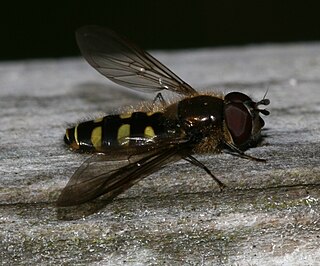
Melangyna lasiophthalma is a Holarctic species of hoverfly.

Epistrophe grossulariae is a Holarctic species of hoverfly.
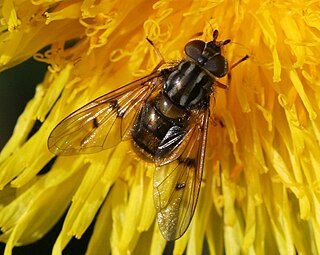
Ferdinandea cuprea is a European species of hoverfly notable for its brassy abdomen. The larvae have been found in sap from trunk damage on oak and ash.

Parasyrphus vittiger is a species of hoverfly, from the family Syrphidae, in the order Diptera.

Anasimyia lineata is a Palaearctic species of hoverfly.

Platycheirus angustatus is a species of hoverfly. It is found in many parts of the Palearctic, and in the Nearctic.

Platycheirus discimanus, the Yellowfoot Sedgesitter is a small species of hoverfly. It is found across Europe and the Palearctic and in North America.
Platycheirus podagratus is a species of hoverfly. It is found in the Holarctic.
Melangyna arctica is a Holarctic species of hoverfly.
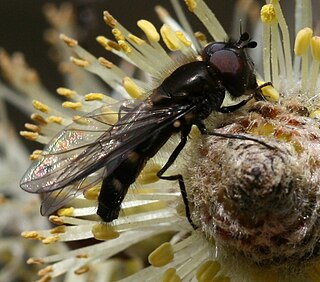
Melangyna quadrimaculata is a European species of hoverfly.

Meligramma guttatum is a Holarctic species of hoverfly.

Eumerus funeralis or lesser bulb fly is a species of Hoverfly, from the family Syrphidae, in the order Diptera. E. funeralis appears in Peck (1988) as a synonym of E. strigatus (Fallen), but was reinstated as the correct name for tuberculatus Rondani, sensu auctorum by Speight et al. (1998).

Xylota florum is a Palearctic species of hoverfly.
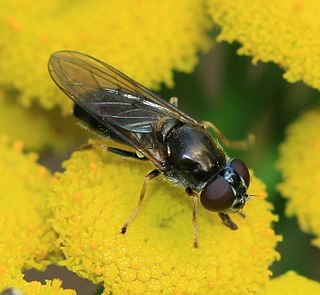
Cheilosia scutellata is a Palearctic hoverfly.

Lejogaster tarsata is a Palearctic hoverfly
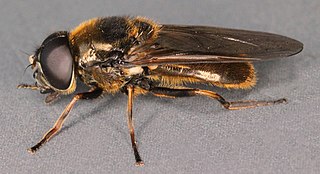
Cheilosia fraterna is a Palearctic hoverfly.


















